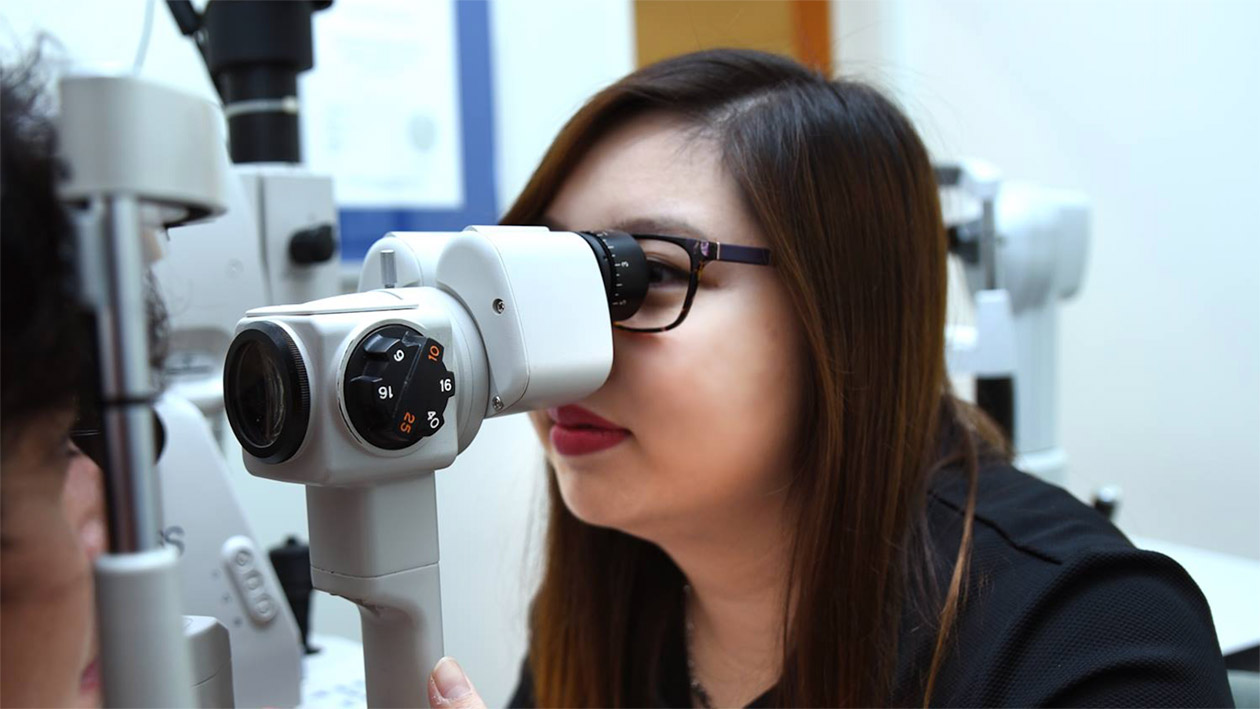
Eye optometry represents a critical branch of healthcare dedicated to preserving and enhancing visual health through preventive care, diagnostic services, and therapeutic interventions. As a primary point of contact for individuals seeking vision-related care, optometrists play an indispensable role in managing ocular health, detecting systemic diseases with ocular manifestations, and ensuring optimal visual performance across all age groups.
Definition and History of Optometry
Optometry derives its etymological roots from the Greek words opsis (view) and metron (measure), reflecting its origins in quantifying visual acuity and refractive errors [1]. Historically, optometry emerged as a discipline focused on correcting refractive errors using optical aids, but its scope has expanded significantly to encompass the diagnosis and management of ocular diseases, rehabilitation of low vision, and collaboration with other medical professionals.
The World Council of Optometry defines optometry as an autonomous, regulated healthcare profession centred on comprehensive eye and vision care, including refraction, disease diagnosis, and visual system rehabilitation.
Optometrists vs Ophthalmologists vs Orthoptists
A common source of public confusion lies in distinguishing optometrists from ophthalmologists and orthoptists.
Optometrists serve as primary eye care providers, conducting routine examinations, treating eye infections, prescribing corrective lenses, and managing conditions like glaucoma and dry eye syndrome.
Ophthalmologists, by contrast, are medical doctors (MDs or DOs) specialising in surgical interventions and advanced disease management, such as cataract extraction or retinal detachment repair.
Orthoptists, often working alongside ophthalmologists, specialise in diagnosing and treating disorders of eye movement and binocular vision, particularly in pediatric populations [2].
Academic Training and Licensing
In Australia, optometrists complete a five-to-seven-year university degree in optometry, followed by registration with the Optometry Board of Australia.
The United States mandates a four-year Doctor of Optometry (O.D.) degree after undergraduate studies, with optional residencies for sub-specialisation [3]. This training equips optometrists with expertise in ocular anatomy, pharmacology, and systemic disease interplay, enabling them to prescribe topical and oral medications, including controlled substances in certain jurisdictions. Regulatory bodies, such as the Association of Regulatory Boards of Optometry (ARBO) in the U.S., enforce practice standards and continuing education requirements.
Global Variations in Scope
Optometric practice varies internationally. For instance:
- United States: Optometrists in Oklahoma and Kentucky may perform laser procedures and minor surgeries, whereas most states restrict them to non-invasive treatments.
- United Kingdom: Optometrists increasingly undertake roles traditionally reserved for ophthalmologists, including independent prescribing rights for glaucoma medications.
- Australia: Optometrists collaborate with GPs and ophthalmologists under Medicare-backed referral systems, ensuring coordinated care for complex cases.
What services does an Optometrist provide?
Optometrists provide a spectrum of services including but not limited to:
- Comprehensive Eye Examinations: These assessments evaluate visual acuity, refractive status (myopia, hyperopia, astigmatism), intraocular pressure (for glaucoma screening), and retinal health using tools like ophthalmoscopy and optical coherence tomography.
- Disease Management: Early detection of conditions such as diabetic retinopathy, macular degeneration, and cataracts enables timely referrals to ophthalmologists. Optometrists in Australia and the U.S. may prescribe therapeutic drugs for infections, inflammation, and post-surgical care [4].
- Vision Correction: Customising eyeglasses, contact lenses, and low-vision aids addresses refractive errors and accommodates occupational or lifestyle needs.
- Pediatric Care: Specialised testing for amblyopia (“lazy eye”), strabismus (misaligned eyes), and developmental vision disorders ensures early intervention.
How is technology used in Optometry?
Modern optometry leverages advanced technologies such as:
- Digital Retinal Imaging: Captures high-resolution images of the retina to monitor diseases like hypertension-related retinopathy.
- Corneal Topography: Maps corneal curvature for contact lens fitting and keratoconus diagnosis.
- Visual Field Analysers: Assess peripheral vision loss in glaucoma and neurological disorders.
Public Health and Systemic Disease Detection
Role in Preventive Medicine
Routine optometric exams often unveil systemic health issues. For example:
- Diabetes: Hemorrhages or exudates on retinal examination may indicate uncontrolled blood glucose levels, prompting early endocrine referral.
- Hypertension: Arteriovenous nicking or retinal artery occlusion signals cardiovascular risk.
- Autoimmune Diseases: Uveitis (ocular inflammation) may precede diagnoses of rheumatoid arthritis or lupus.
Community Outreach and Education
Optometrists advocate for public health through:
- School Vision Screenings: Identifying refractive errors and amblyopia in children improves academic performance and reduces long-term disability.
- Occupational Safety Programs: Advising on protective eyewear for industrial workers mitigates trauma risks.
- Aging Population Support: Managing age-related vision loss through magnifiers, lighting adjustments, and cataract referrals enhances quality of life.
Cost Accessibility and Insurance Coverage
In Australia, Medicare subsidises optometric services, including biennial eye exams for individuals under 65 and annual exams for those over 65 or with diabetes. Private health insurance often covers prescription lenses and contact lenses, though coverage varies by policy.
In the U.S., optometrists bill medical insurance for disease-related visits (e.g., glaucoma monitoring) and vision insurance for routine refractive care.
What is the future of Optometry?
Telemedicine and Remote Diagnostics
The COVID-19 pandemic accelerated adoption of telehealth platforms for virtual consultations, remote visual field testing, and diabetic retinopathy screening via smartphone-based adapters. Such innovations improve access in rural and underserved regions.
Genomic and Personalised Medicine
Emerging research on genetic markers for glaucoma and macular degeneration may enable optometrists to tailor screening intervals and preventive therapies based on individual risk profiles.
Interprofessional Collaboration
Integrated care models, where optometrists co-manage post-surgical patients (e.g., post-LASIK or cataract surgery) with ophthalmologists, enhance outcomes and reduce healthcare costs are no doubt set to increase into the future, leading to better outcomes for patients.
Eye optometry stands as a dynamic and essential healthcare profession, bridging preventive care, disease management, and technological innovation. By maintaining rigorous educational standards, adapting to technological advancements, and fostering collaboration with medical colleagues, optometrists ensure comprehensive eye health services for diverse populations. Future challenges, including equitable access and scope-of-practice debates, will require ongoing dialogue among practitioners, policymakers, and patients to uphold the profession’s mission: preserving vision as a cornerstone of human well-being.